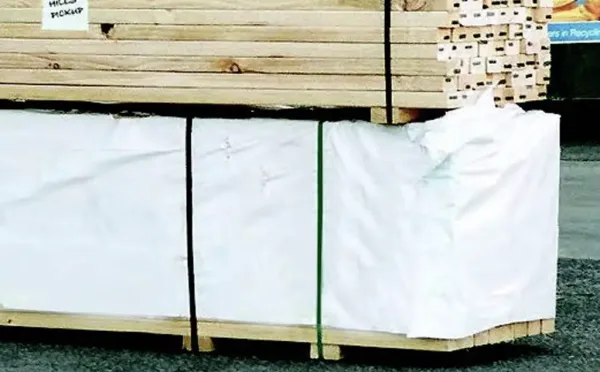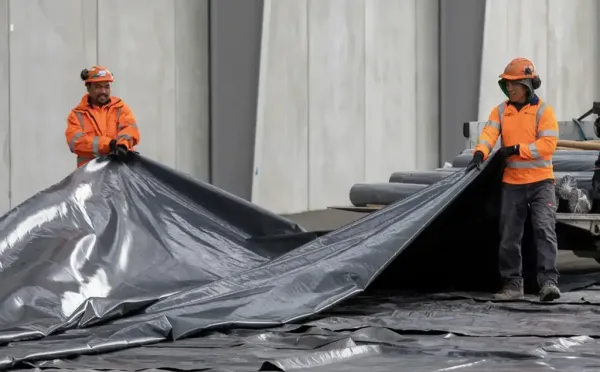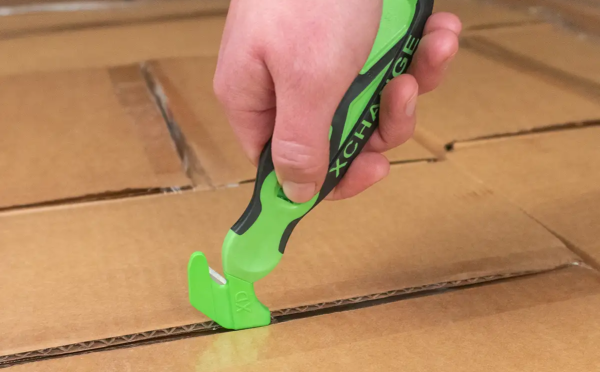Pallet wrapping can typically be applied to three types of pallets, each requiring their own unique application of the wrap. For all pallet loads, it is important to make sure that any corners or edges are placed in the middle of the wrap and not near the edges. This helps reduce the likelihood of the film tearing or snapping. The following is a description of each of the three types of pallets wrapped.
Standard Uniform Pallet Loads
Standard loads that have uniform horizontal and vertical edge profiles are the simplest and easiest pallets to wrap. The pallet’s footprint is usually the same size as the pallet deck and the load profiles look the most like a perfect cube. They may have a few edges or corners that can pierce the stretch film so care must still be taken when wrapping but these are the easiest loads to wrap and contain correctly.
Semi-irregular Pallet Loads
Semi-irregular loads don’t have the same uniform and structured shape as typical standard loads making it more difficult to wrap and contain. Rather than being a perfect cube, you may have some boxes or items protruding over the pallet deck meaning you’ll have an irregular shape to wrap the stretch film around. There are likely to be a few edges and corners that could pierce the stretch film so care should be taken when wrapping.
Irregular Pallet Loads
Irregular loads are the most inconsistent loads and typically vary from pallet to pallet with no two loads the same. There will be both horizontal and vertical edges that are more pronounced than those of the other pallet loads. These sharp edges that protrude out may require more stretch finesse and a higher quality of stretch film. These types of loads are the most difficult to correctly wrap and require more attention to applying the pallet wrap and the stretch film containment force required.
3-1-3-1 Method to Wrapping a Pallet
While every pallet has some flexibility in how it can be wrapped and specific or unique requirements based on the load, to achieve the best results and highest containment force, the 3-1-3-1 method is tried and trusted for both hand and machine wrapping.
Starting at the bottom of the pallet, wrap the pallet 3 times around at the base then in a uniform manner, making sure to overlap the wrap, start making your way to the top of the pallet. At the top of the pallet, wrap the pallet 3 times around before making your way back down the pallet in the same uniform manner, overlapping the wrap on the way down. When you get to the bottom, the wrap is complete.
The 3-1-3-1 method gives you higher strength and containment at the top and bottom of the pallet to secure the load to the pallet at the bottom and minimise movement and sway at the top of the pallet.
Containment Force Guide
Containment force is the force with which the pallet wrap holds the load to the pallet and minimises any movement of the load. Typically, the heavier the load, the greater the containment force required.
It is important to remember, however, that containment force applies pressure to the load and pulls it together and a force that is too high could damage the load.
Care and common sense should thus be applied when selecting the appropriate containment force. The table below sets out generally accepted industry standards for the containment force required for different pallet loads.
| Load | Load Examples | Load Weight | Containment Force |
|---|---|---|---|
| Very Light | Paper towels, empty containers | <225kgs | 0.9kgs to 2.7kgs |
| Mid-Weight Stable Loads | Cartons | 225kgs to 500kgs | 2.7kgs to 3.6kgs |
| Heavy, Unstable Loads | Tall, narrow cartons, unstable beverages | 500kgs to 770kgs | 3.6kgs to 7.7kgs |
| Very Heavy, Unstable Loads | Bottles of liquid | 770kgs to 1,000kgs | 6.8kgs to 10kgs |
If you would like to test your containment force or discuss selecting the appropriate wrap and containment force for your business requirements, please do not hesitate to contact us. We are here to help!
- Email: sales@stretchwrap.co.nz
- Phone: +64 9 948 1040





